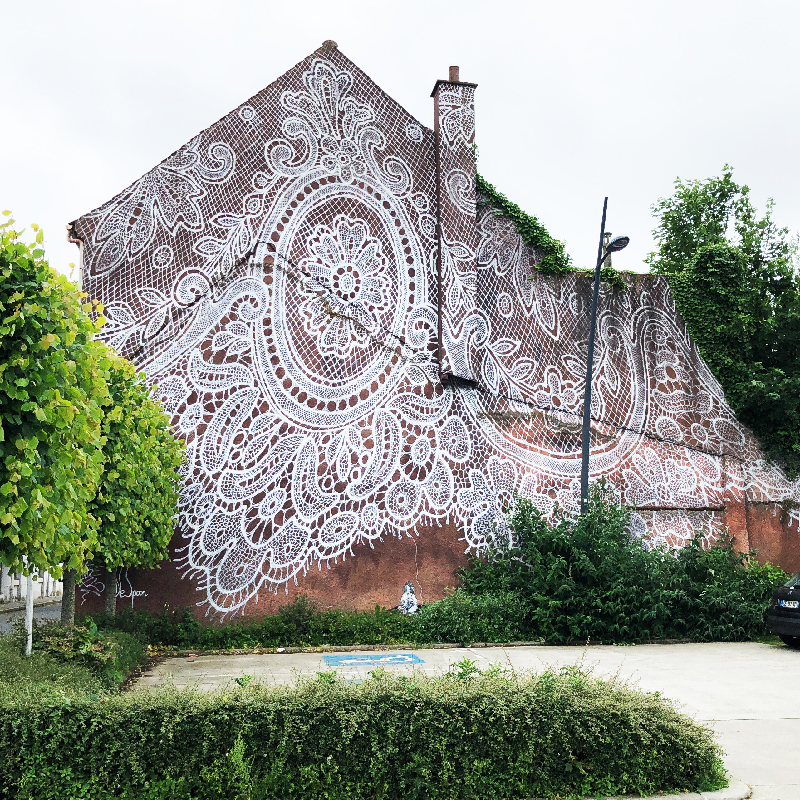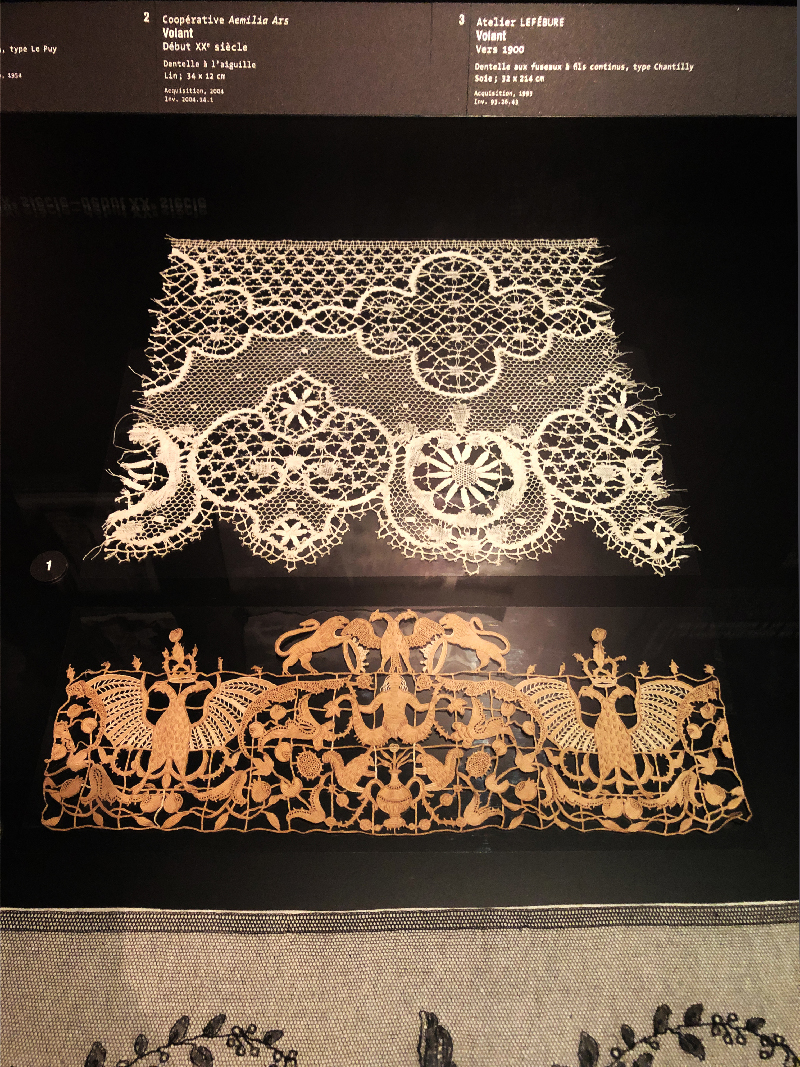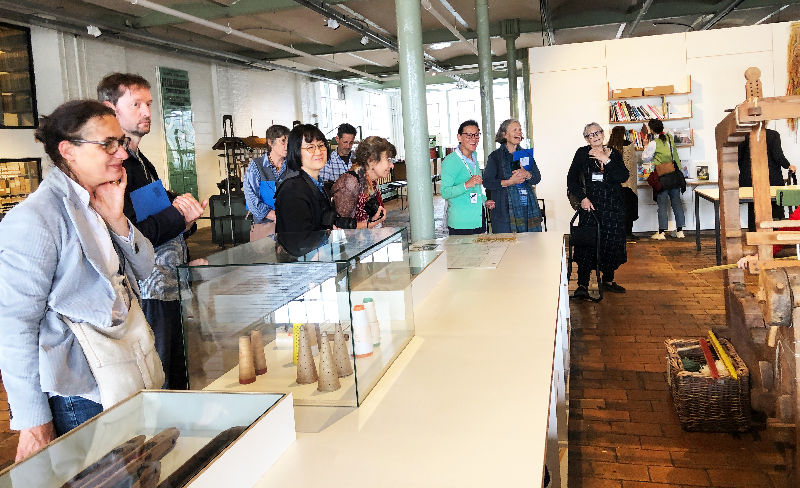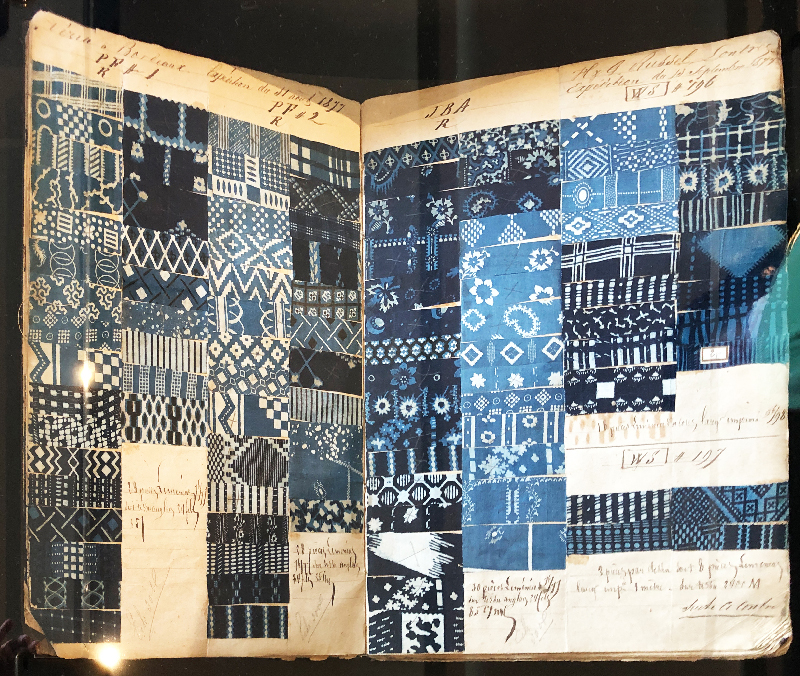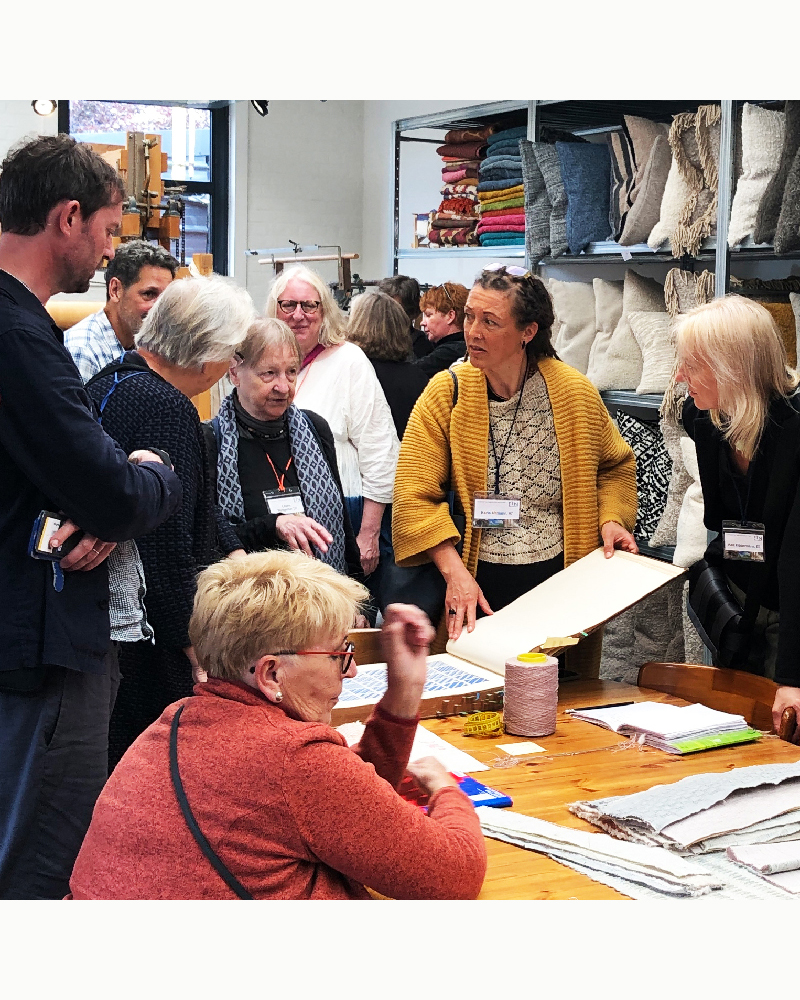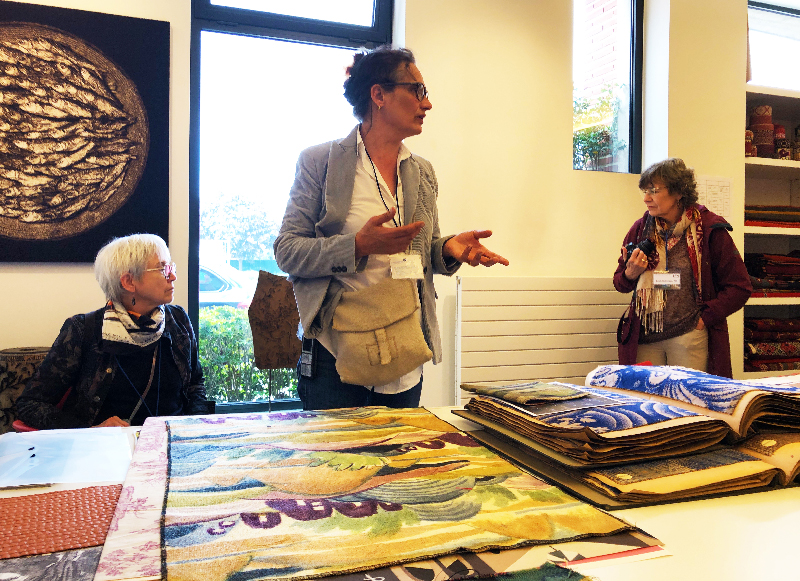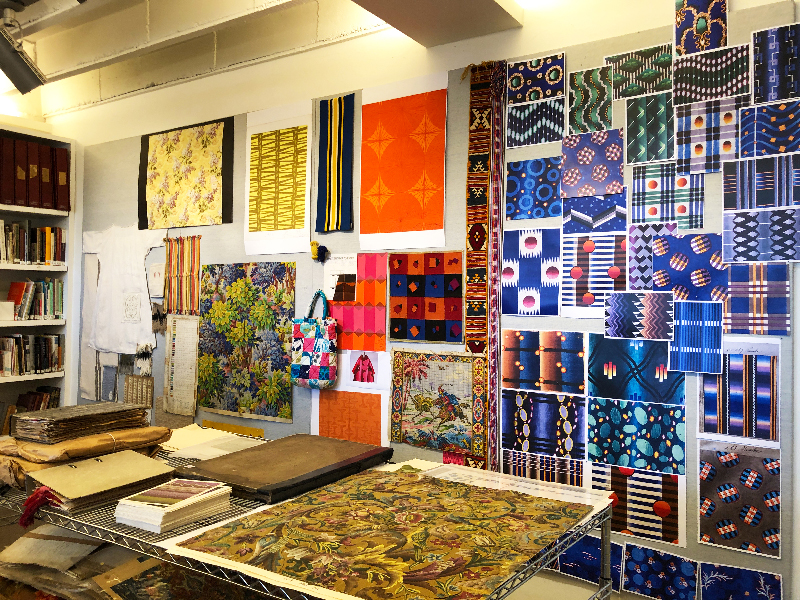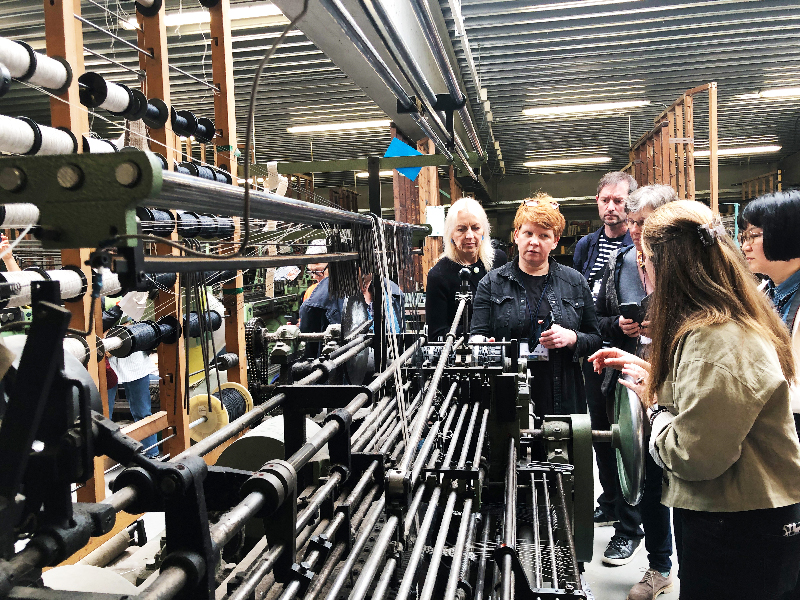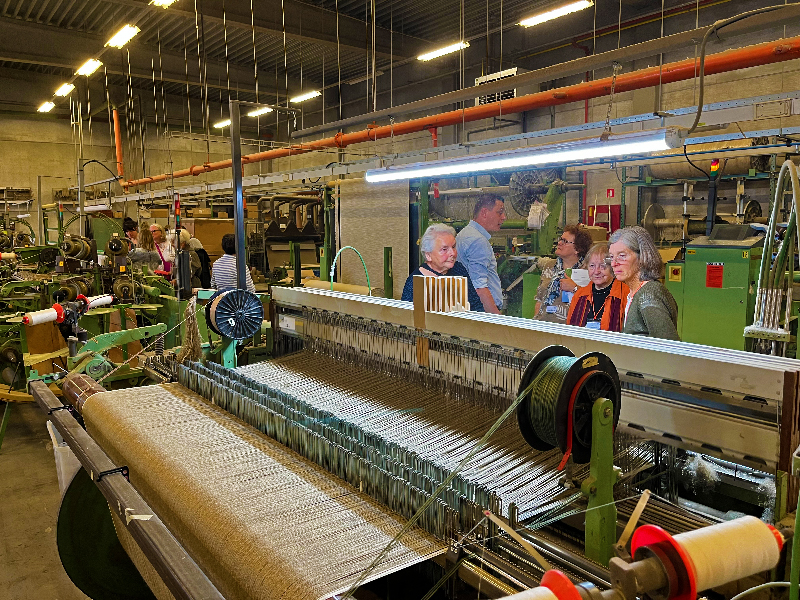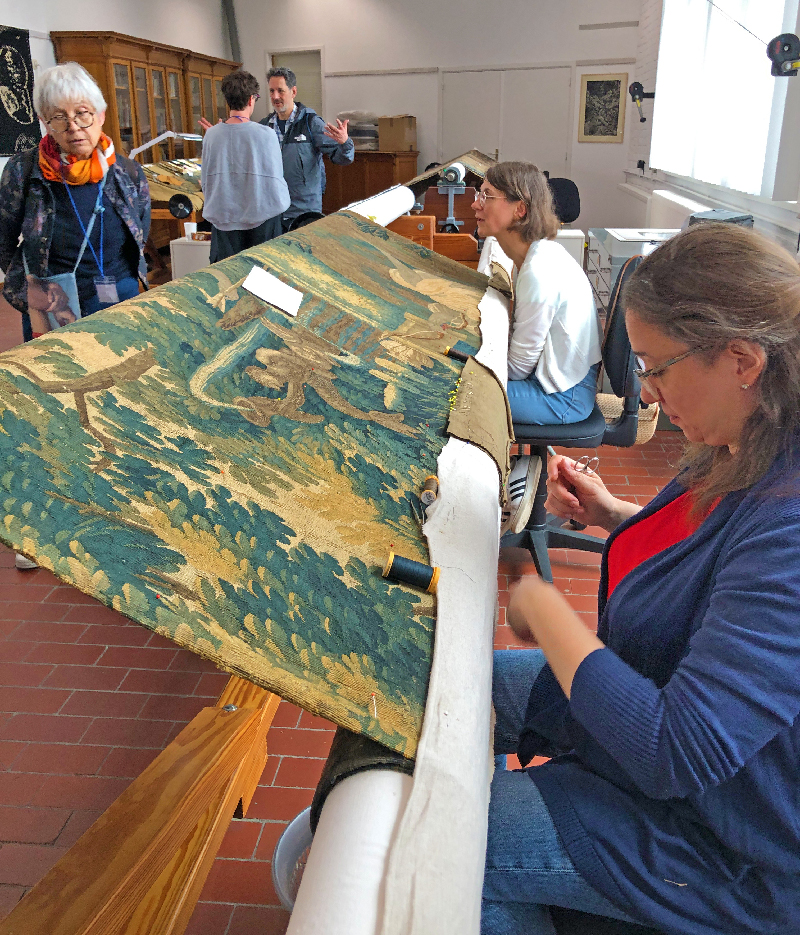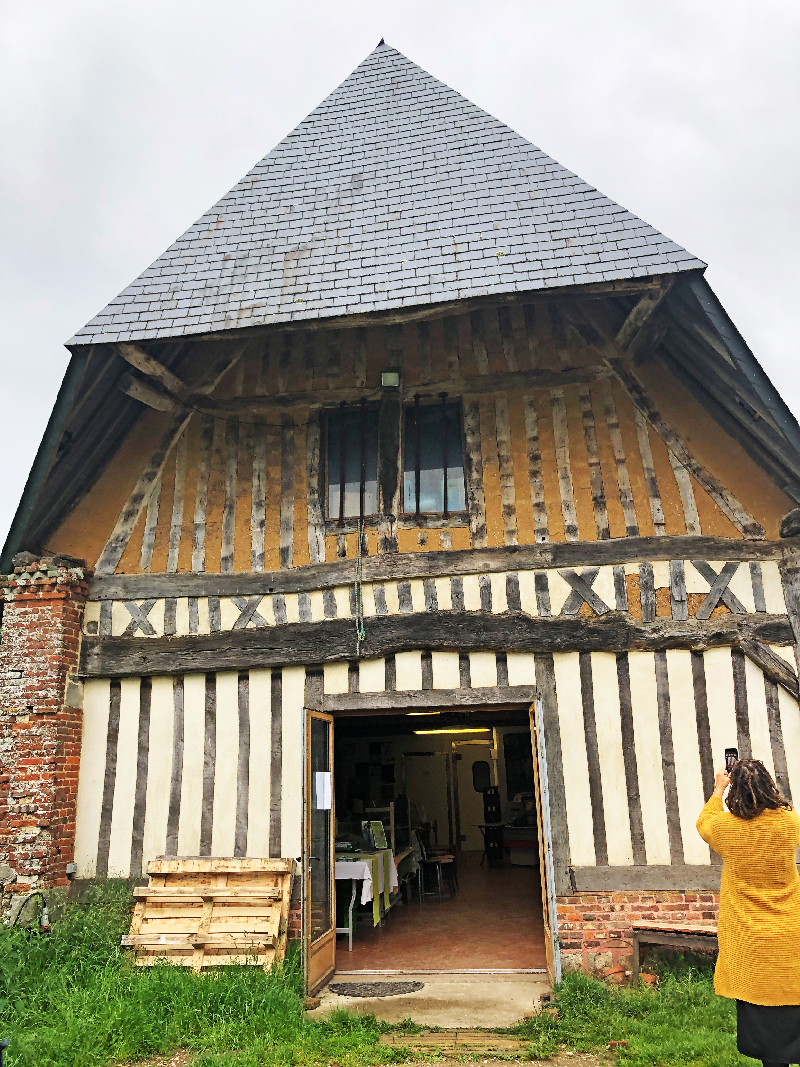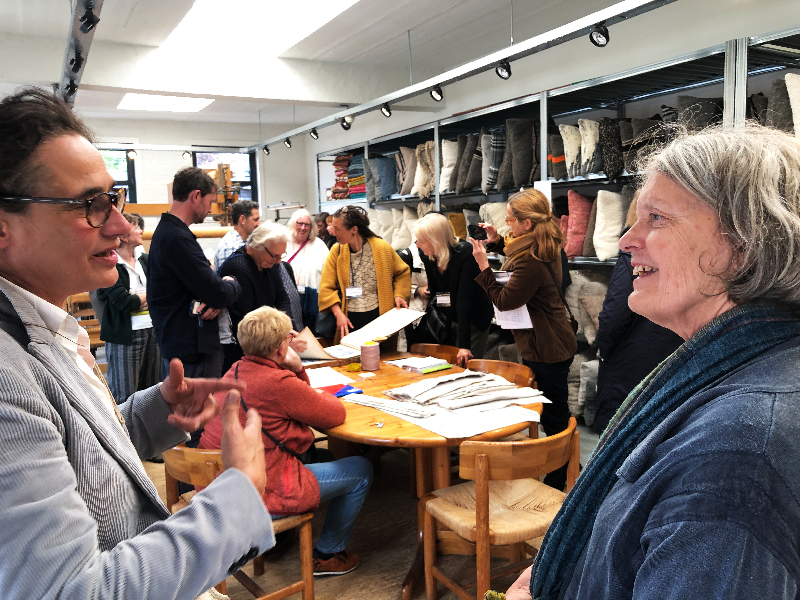
ETN Field Trip – Flax in Belgium and Northern France
This trip was a surprise because it revealed changes in the flax industry that I was not aware of. Demand from high-end fabric processors is bringing spinners and weavers back to where the flax is grown, to Belgium and Northern France. Normally, most of the flax is spun in China, where it may be blended with other fibres such as hemp, then goes to the places where it is woven, usually in a country with cheap labour, after which the final product may return to Europe. In Belgium we were told that high-end customers want to control the flax so that they get the highest quality in both the fibre and the weaving. This seems to be the case only for those who can pay the higher prices for the best the flax industry can produce without long distance transport, child labour or environmental damage. It was certainly no coincidence that most of the companies we visited were family-owned, which seems to be more flexible in adapting to customer demand. Although this was a very positive aspect, there is still a lot of work to be done as most flax farmers cannot easily switch to organic farming. Without pesticides, the performance of a flax field will be lower than usual, and flax is a rotating crop that can only be grown once in seven years on the same field. This means that all other crops must also grow organically to keep the field clean! The yield of one hectare (10,000 square metres) of land in fibre flax is around 700 kilos (source wikipedia). Due to climate change, this yield will be reduced, as the last warm years have shown.
We visited the whole process in reverse order, first weaving in Belgium, then spinning and finally growing and processing flax in France. In between, we visited some important museums, such as the Museum of Industry in Ghent, where we started our tour. Our group consisted of 38 people from the Netherlands, Germany, Austria, Luxembourg, Belgium, Norway, Finland, Estonia, Great Britain, Belarus, the USA and Taiwan. Among them were artists, dyers, weavers, museum workers, writers, university lecturers and other flax enthusiasts.
DAY 1 // Wednesday 29 May // Gent – Waarschoot – Kortrijk
The Museum of Industry tells the story of the Industrial Revolution and how steam and electricity revolutionised industrial life. The museum is housed in an old cotton mill and has two other exhibitions with working machinery.
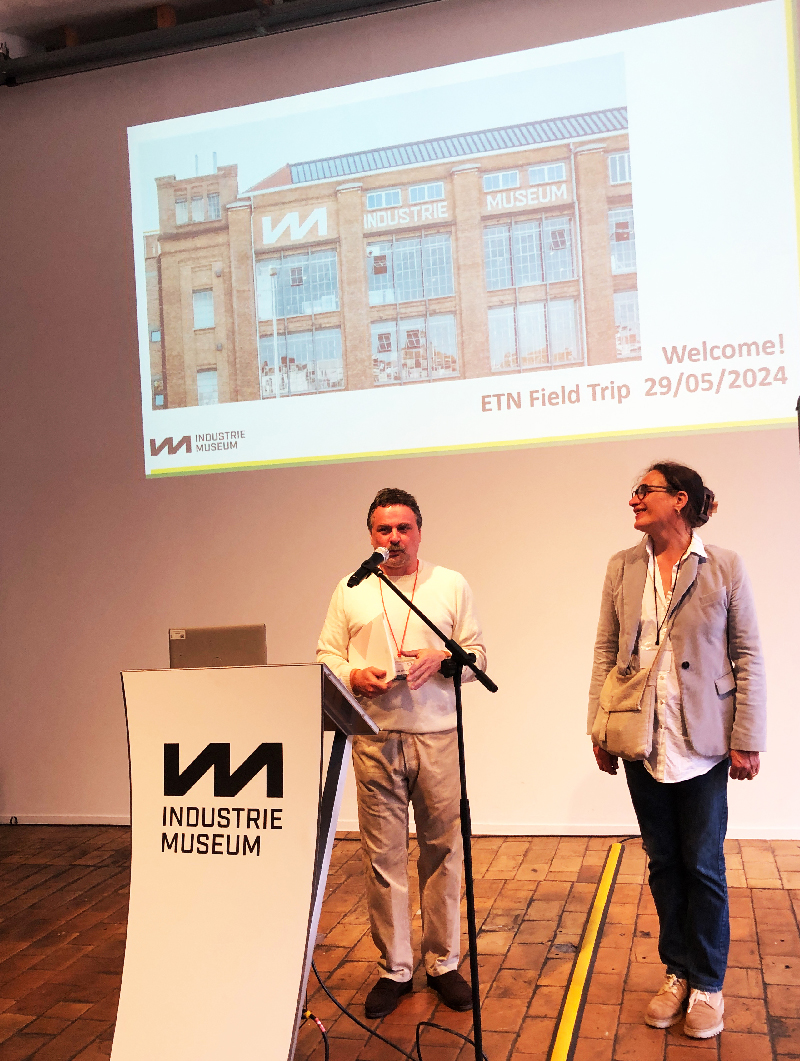
Visit B &T Textilia in Waarschoot, a mill for “high-quality jacquard and plain fabrics of uncompromising quality”. The company has a long history, but its current name started in the 90s and it now works for this very high quality, very handcrafted sector. We were greeted in a room where the company’s hand-weaver, Hélène Borchers, had laid out her linen samples on the table, just like in the textile departments of universities. Our wonderful guide, Marie-Anne van der Plaetsen, who used to work for this company, explained to us how this company works with its clients (mainly high-end international brands) to find new solutions for interior fabrics or fashion. There are about 8 designers working in this company, all looking for new ideas and techniques to create exciting fabrics. Their showroom was a dream and we were lucky enough to buy some of the sample fabrics.
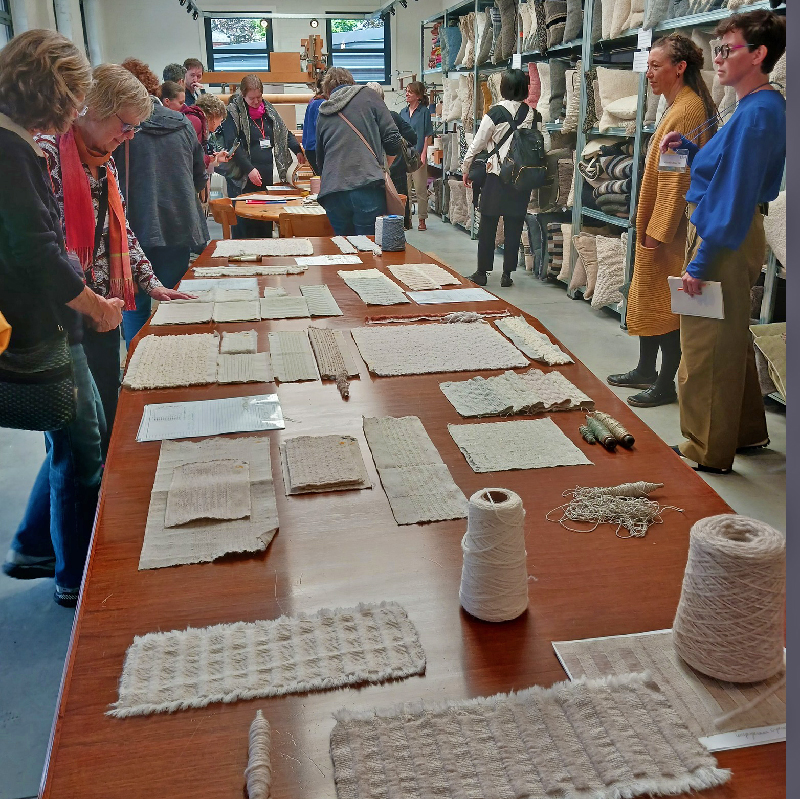
The next stop was in Kortrijk at the Flax Museum, now called “Texture“, where we had dinner and were able to see the flax craftsmanship of the past, as well as some very fine flax products (household linen and lace) in the treasure room. The museum is located in the former flax dispatch house on the banks of the river Leie, which played an important role in the retting of flax in the past (today only field retting is used).
DAY 2 // Thursday 30 May // Kortrijk – Ingelmunster – Tournai
The next day we visited Deltracon in Ingelmunster, Belgium. Deltracon is a family owned weaving mill producing high quality linen fabrics. It was founded in 1990 by Rudy & Kathleen Delchambre. In 2013, their daughter Darline joined the company. This weaving mill was again specialised in craftsmanship, flexibility, creativity and innovation in all kinds of linen products, mainly for interior textiles. We were greeted by the owner himself, who was very honest in answering our questions: He told us that there were not enough designers coming out of the Belgian textile departments (KASK Academy, Luca School of Art, both in Ghent, and La Cambre in Brussels) and that the clients’ demands were not always realistic. Fortunately, he is able to work with one of the best Belgian designers trained at KASK, Esther Van Schuylenbergh, who then showed us around in the studio. As with B &T, we were allowed to visit the weaving mill and take as many pictures as we wanted, but our guide was not allowed in because she was from a competing company.
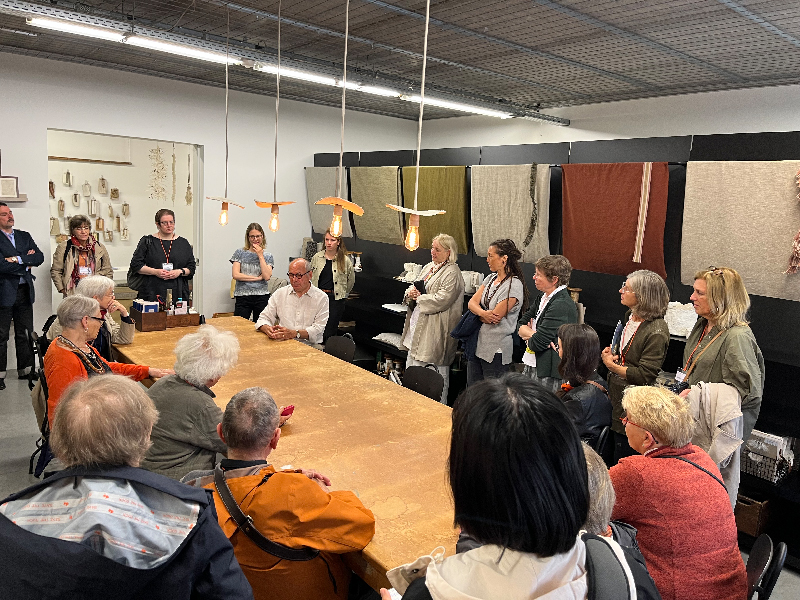
What was new for me in both weaving mills: The amount of work that goes into developing new fabrics in these high-end mills, which can sometimes take months and is paid for by the customer. The final weaving does not take that long!
Our group then travelled to Crecit in Tournai, where we were shown around the tapestry activities and the laboratory. Crecit (Centre for Research and Scientific and Technical Control for the Textile Industry) currently has two main tasks:
- Cultural and artistic activities through its “Tournai Tapestry Workshops”, such as the restoration and conservation of old tapestries and textiles, but also the production of contemporary tapestries.
- More scientific activities through its testing laboratory.
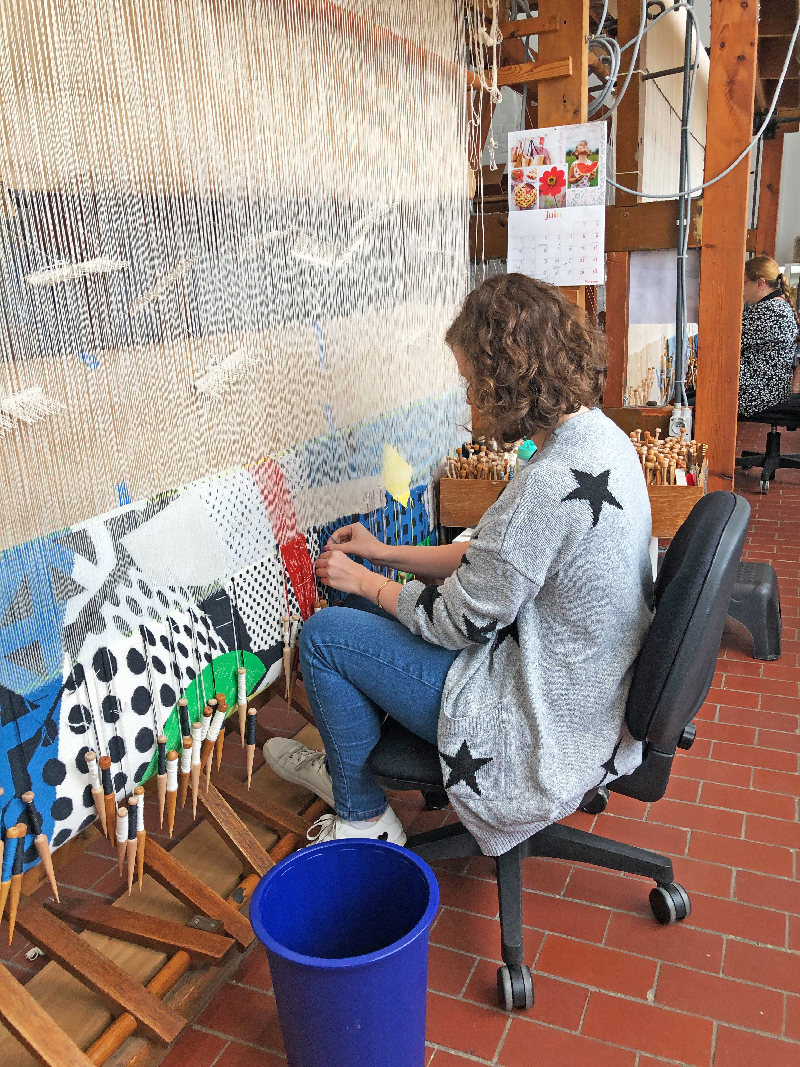
Creation of a modern tapestry at Crecit in Tournai/Belgium; photo Beatrijs Sterk
Our next visit was to TAMAT, also in Tournai, once the centre of tapestry weaving and also famous for the Tournai Tapestry Triennials (the 5th Triennial was held in 2005). TAMAT is a centre for textile arts created by the Wallonia-Brussels Federation. In 1990, TAMAT moved to a beautiful neoclassical mansion, the Tapestry Museum in the city of Tournai. In addition to collections ranging from ancient tapestries dating from the 15th century to the most contemporary works, TAMAT also houses research workshops. Each year, these allow scholarship holders to explore, in complete artistic freedom, the infinite possibilities offered by textiles. A restoration and conservation workshop and a documentation centre complete the centre’s wide range of activities. We were able to view the museum’s tapestries and talk to the four current fellows.
After dinner, we were invited to visit the Daniel Henry design studio, which amazed us with its creativity and ingenuity. He said of his work: “For the last ten years or so, I have devoted all my time to research, away from my clients, with the sacred as a central theme. The sacred is expressed in my creations through the search for the absolute and the light of gold”. He was a real artist-craftsman and not just a designer!
DAY 3 // Friday 31 May // Tournai – Béthune – St Valery en Caux
On day 3 of our flax tour we travelled to Bethune in France to visit the Safilin flax and hemp spinning mill, originally based in Poland but re-opened in France in 2002 to offer 100% French linen after a 20-year break. The company’s CEO, Olivier Guillaume, took the time to tell us how and why this small mill was set up with state aid, clearly demonstrating his dedication and enthusiasm for his goal: to supply the best possible fibre to the European customer.
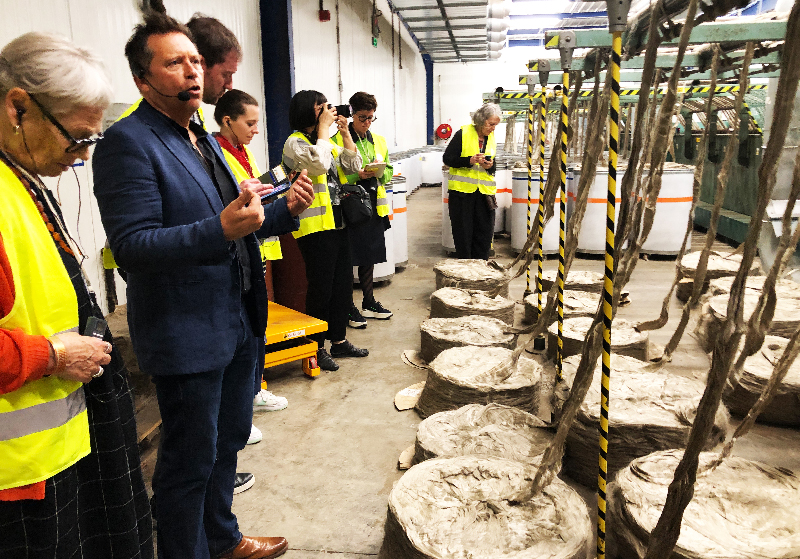
In the afternoon of the same day, we travelled to St Pierre le Viger, also in France, to visit the Terre Du Lin flax cooperative. Here we saw the farmers bringing in their bales of flax, with the field where the flax was grown marked on the bale. Then the processing of the flax, the scutching and hackling, done by modern machinery in a huge hall. I had never seen this done on an industrial scale before, and I doubt if any of our group had, so it was again very interesting.
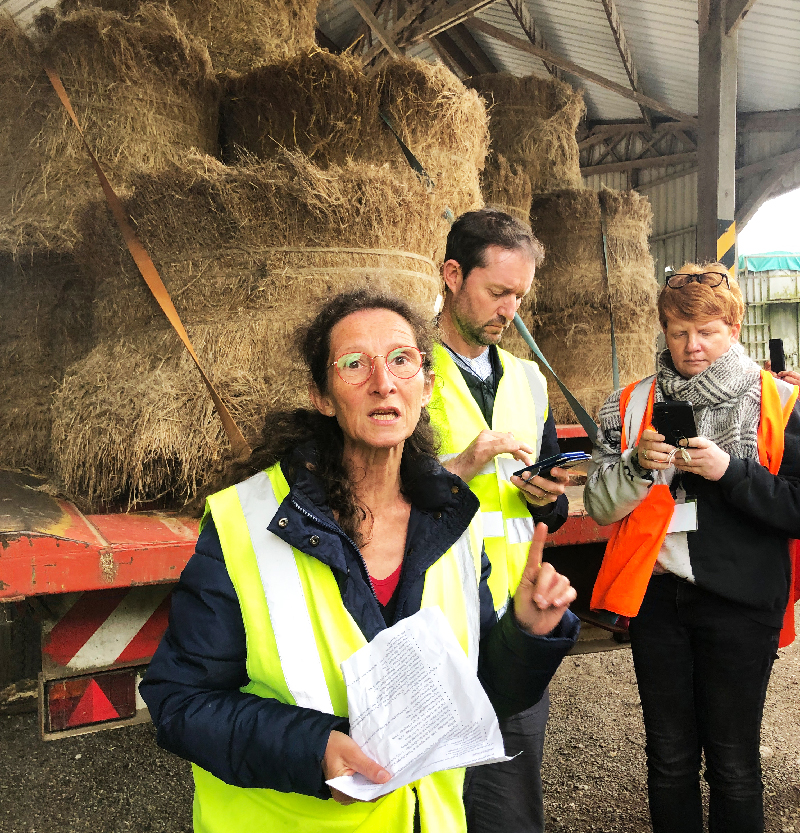
Dinner was at the hotel with a charming French-English talk by Catherine Sauvage, an expert in organic flax.
DAY 4 // Saturday 1 June // St Valery en Caux – Saint-Vaast-Dieppedalle – Calais – Gent
The last day of the tour took us to Saint-Vaast-Dieppedalle in France, to an organic flax and hemp farm called “Les Près D’Artemare”. Here we learnt about the seven-year rotation of flax crops and the additional problems organic farmers face after the CVO, as consumers have less money to spend. Flax is also affected by climate change due to the warm summers! This was a real farm visit with cows and other animals and I felt very awkward as I did not dare to walk back through the two rows of cows on my own while the farm owner was still answering questions.
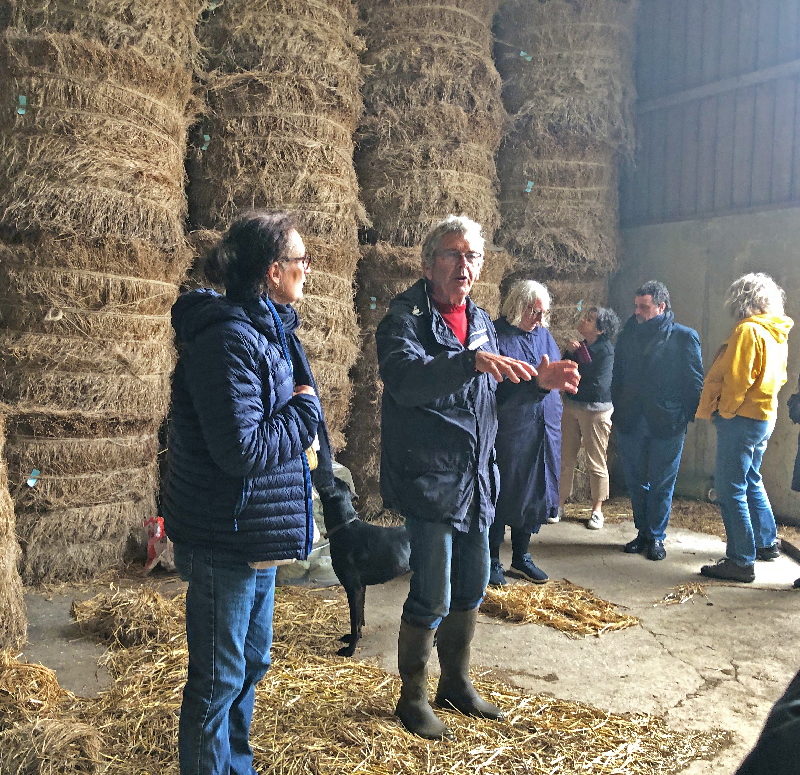
The last visit was to the Lace Museum of Calais, still in France. Set in an authentic nineteenth century lace factory, the Lace and Fashion Museum is a specialist museum dedicated to the famous lace woven on looms. It presents the techniques, lingerie and haute couture associated with lace, as well as its contemporary aspects.
Derived from a technique invented in England in the nineteenth century, Leaver’s loom lace is now produced mainly in northern France. Unlike the Jacquard loom, the Leaver’s loom has not yet been digitised, as this would be too time-consuming and complicated, so the Leaver’s loom still works the old-fashioned way with punched cards, a fascinating machine that is still in use in Calais, where people know the details of this marvel of human ingenuity!
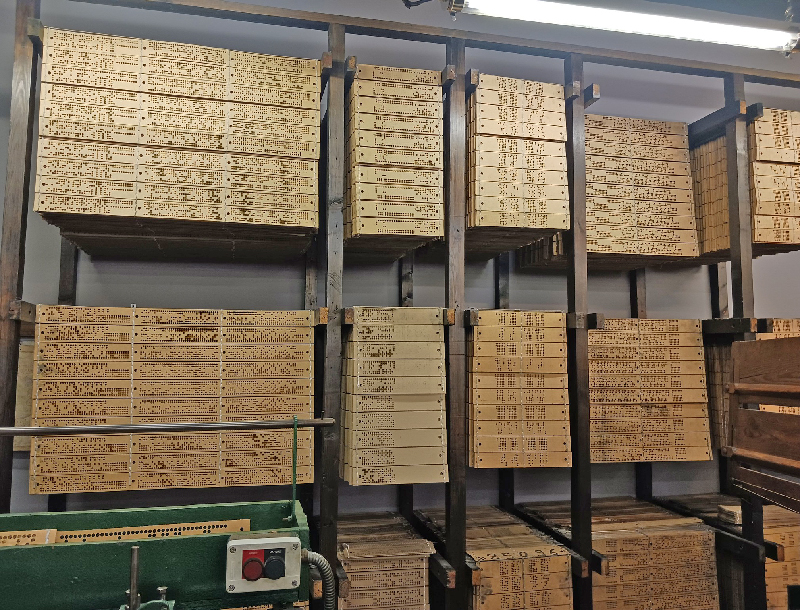
Our last visit was far too short, but all in all we saw more than we expected and could digest! For my part, I will remember above all the enthusiasm and commitment of all those who showed us around their museums and businesses! This was the first study trip organised by ETN and it was well planned and very informative. More such study trips to special places and textile themes would be wonderful!
